| South African Army Combat Training Centre | |
|---|---|
| Postmasburg, Northern Cape province, [South Africa] | |
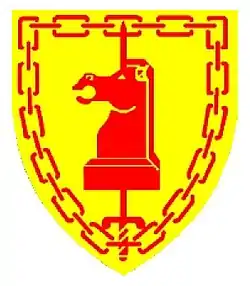 SANDF Army Training Combat Centre emblem | |
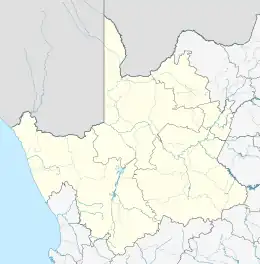 Lohatla Upington Kimberley Lohatla (Northern Cape) | |
| Type | Military Training Area |
| Area | 158,000 hectares or 1,580km^2 |
| Site information | |
| Owner | Department of Defence |
| Controlled by | |
| Condition | In use |
| Site history | |
| Built | 1978 |
| In use | 1978 – present |
| Garrison information | |
| Current commander | Brigadier General Manyonyo Mofokeng |
Lohatla is a training area of the South African National Defence Force. It is located in the Northern Cape province of South Africa and is home to the SA Army Combat Training Centre,[lower-alpha 1] which is part of the South African Army Training Formation.
Capability
The SA Army Combat Training Centre is unique in the sense that it is one of only ten such institutions in the world that provide exclusive and permanent facilities for landward warfare training. Only two of these institutions are located in the Southern hemisphere, of which the SA Army Combat Training Centre is the largest, 150,000 hectares (370,000 acres) in total.[1]}
History
This military training institution was founded on 15 January 1978 and was known as the South African Army Battle School.[2]
The Battle School originated due to a need by the Department of Defence for a military training facility where conventional and integrated training on divisional level could be executed.[3]
Nature Reserve
The Ga-Thlose Nature Reserve was proclaimed in 1890 and was managed as its domain by Agricultural Credit. Ownership by the local population was denied through a proclamation in 1976 and the Reserve was proclaimed a restricted military area. The local population living in the area were to be relocated in the passage of time. In the meantime it was agreed that the specific group of the local community could graze their cattle in the designated grazing areas. The movement to Ga-Thlose from the Sishen Gate was also permitted.
Area enlarged
The purchase of farms east and south of the above-mentioned area was completed in 1981 and the area, as a whole, was proclaimed as a restricted military area. The infrastructure taken over from the farmers was in a good condition.
Permanent in house units
During the early nineties, nine self accounting units were permanently based on the terrain:
- 61 Mechanised Battalion Group, (currently integrated into 8 SAI at Upington)
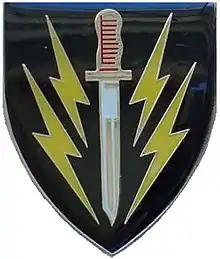 61 Mech Battalion
61 Mech Battalion - Training Group,
- HQ Unit,
- 12 Field Engineers Regiment,
- 8 Signals Group,
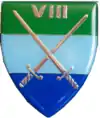 8 Signals badge
8 Signals badge - 101 Works Unit,
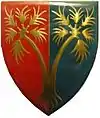 101 Workshop
101 Workshop - 16 Maintenance Unit, (reactivated on 25 September 1992 at Lohatla. Up to 2000, 16 Maintenance was the 2nd line support institution to forces participating in exercises and provided day to day support to the School. Since then the unit has developed as a Combat Zone Maintenance Unit)
 16 Maintenance Unit beret badge
16 Maintenance Unit beret badge - 8 Division Mobilisation Unit and
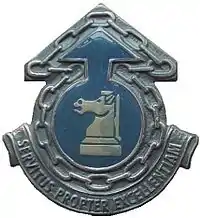 8 Division Mobilization Unit transferred to Lohatla Army Battle School but eventually became the Rapid Deployment Force Mobilisation Unit
8 Division Mobilization Unit transferred to Lohatla Army Battle School but eventually became the Rapid Deployment Force Mobilisation Unit

- a Provost Unit
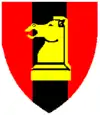 Lohatla Provost Unit
Lohatla Provost Unit
A Forward Air Command Post and Medical Command Post helped to integrate elements from the Air Force and Medical Service.

60 Brigade
Stemming from a reorganisation at Oshivello in 1989 from the 'ABS Rapid Deployment Force', an operational mechanised Brigade called 60 Brigade managing 61, 62 (placeholder battalion based on 4 SAI) and 63 (placeholder battalion based on 8 SAI) mechanised battalions as a joint entity was briefly housed at Lohatla from 1989 to 1994. This Brigade was primarily aimed at planning readiness for a conventional mechanised war and based on lessons learned from Operation Merlyn.[4]
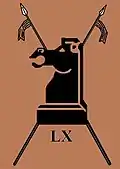
Visiting Units
Each unit visiting for training is accommodated in one of thirteen unit lines which has tank paving, maintenance areas and stores.
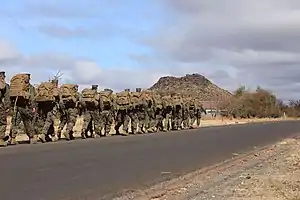 Shared Accord 17
Shared Accord 17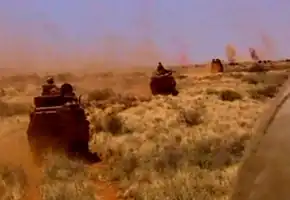 Ratel formation approach a target on a range at Lohatla
Ratel formation approach a target on a range at Lohatla 8 SAI Ratel IFVs on a training range in a mechanised assault, Lohatla Army Battle School, 1993
8 SAI Ratel IFVs on a training range in a mechanised assault, Lohatla Army Battle School, 1993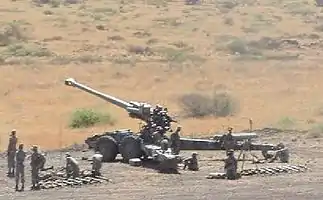 G5 howitzer on range
G5 howitzer on range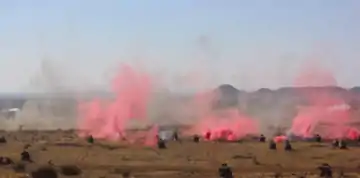 Infantry in fire and maneuver at Lohatla
Infantry in fire and maneuver at Lohatla
Insignia
 SADF era Lohatla Army Battle School beret badge
SADF era Lohatla Army Battle School beret badge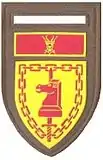 SADF era Lohatla Army Battle School Tupper Flash
SADF era Lohatla Army Battle School Tupper Flash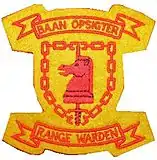 SADF era Lohatla Range Warden Badge
SADF era Lohatla Range Warden Badge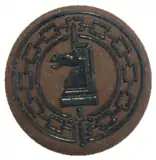 SANDF era Lohatla Instructor Badge
SANDF era Lohatla Instructor Badge
SANDF era
A long-running land dispute involving the South African Army Combat Training Centre (CTC) at Lohatlha in the Northern Cape ended when the Department of Rural Development and Land Reform found alternative land to settle some of the community displaced by the 158 000 hectare base and training area in 1977.[5]
The institution was renamed the South African Army Combat Training Centre on 24 October 2000.[6][7]
Annual Exercise Seboka integrated training
Exercise Seboka demonstrates the training of units in operations from each combat discipline. Infantry, Armour, Artillery, Intelligence, Air Defence Artillery, Engineers as well as elements from the Air Force and Military Health Serves are integrated. The exercise gives units the opportunity to plan and execute mobile warfare operations in real-time command and control under the supervision of experienced commanders.[8][9][10]
Training of the African Standby Force
The Army Combat Training Centre hosted the Amani Africa 2 field exercise to demonstrate the African Unions rapid deployment capability in 2015. The field exercise involved five regional economic communities, as structures of the African Union. Approximately 5,400 members from the military, police, and civilian components, representing four of the regional economic regions of the AU participated in the exercise. Countries involved included Algeria, Angola, Botswana, Burundi, Democratic Republic of the Congo, Egypt, Eswatini, Ethiopia, Gambia, Ghana, Kenya, Lesotho, Malawi, Mozambique, Namibia, Nigeria, Rwanda, South Africa, Uganda, Zambia, and Zimbabwe.[11]
Leadership
| From | Commanding Officer | To |
| 1978 | Brigadier F.E.C. van den Berg | 1981 |
| 1981 | Brigadier C. van Rooyen | 1984 |
| 1984 | Brigadier Eddie Webb | nd |
| 1 March 2005 | Brigadier General J.D. Magasela | 1 December 2007 |
| 1 December 2007 | Brigadier General Nontobeko Mpaxa | 1 March 2013 |
| 1 March 2013 | Brigadier General Bhasie Gqoboka | 31 December 2014 |
| 1 January 2015 | Brigadier General Mawethu Mdlulwa | nd |
| nd | Brigadier General Manyonyo Mofokeng | Present |
| From | Regimental Sergeant Major | To |
| c. 1978 | WO1 J.H. Burger | c. 1980 |
| c. 1980 | WO1 G. Venter | c. 1981 |
Notes
- ↑ Previously known as Lohatla Army Battle School
References
- ↑ "SA Army Combat Training Centre". www.actc.army.mil.za. Archived from the original on 10 August 2018. Retrieved 19 January 2023.
- ↑ Martin, Guy (18 November 2013). "SA Army bares its teeth during Exercise Seboka - defenceWeb". defenceweb.co.za.
- ↑ "SA soldiers prepare to fight again". www.enca.com. eNCA. Retrieved 19 January 2023.
- ↑ Scholtz, L. (2012). "The Lessons of the Border War". Scientia Militaria. 40 (3): 318–353. doi:10.5787/40-3-1039.
- ↑ Engelbrecht, Leon (7 December 2010). "Lohatlha land dispute settled". defenceweb.co.za. defenceWeb.
- ↑ "SA to host large scale African Union military exercise". timeslive.co.za. Times LIVE. 7 October 2015. Retrieved 19 January 2023.
- ↑ Martin, Guy (18 November 2013). "New gallery: Exercise Seboka 2013". defenceweb.co.za. defenceWeb.
- ↑ Martin, Guy (3 November 2015). "ISS: African Standby Force: how the AU can get it right". defenceweb.co.za. defenceWeb.
- ↑ "SA Army exercise kicks off at Lohatla". defenceWeb. 5 October 2018. Retrieved 19 January 2023.
- ↑ "US Army in SA for peacekeeping exercise". Times Live. Retrieved 19 January 2023.
- ↑ "SA readies to host AU military field training". eNCA. Retrieved 19 January 2023.
External links
- "Official SA Army Website". Retrieved 9 October 2022.